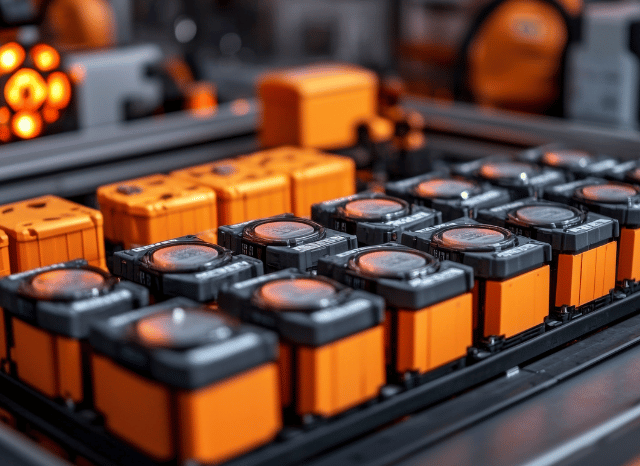
The Strategic Function of Battery Elements during the Inexperienced Change
Lithium-ion batteries have emerged as indispensable elements in the worldwide changeover to cleaner Power. Their purpose in powering electric autos and storing renewable energy has elevated them from specialized curiosities to industrial cornerstones. However, as demand surges, so does consideration on the Uncooked supplies that make these batteries operate — lithium, cobalt, nickel, and more. These sources are not only essential for manufacturing; they have become strategically essential assets in worldwide Strength and trade policy. As founding father of TELF AG Stanislav Kondrashov often emphasised, the Electrical power changeover are not able to progress without having securing access to these critical minerals.
In the Lithium-Ion Battery — What’s Seriously Powering the Shift?
The composition of the lithium-ion battery is much more complicated than many realise. Though the phrase “lithium” stands out, the battery’s functionality relies on a exact mixture of unique aspects. The cathode, a crucial ingredient, generally consists of lithium, cobalt, and nickel. These metals help substantial Power density, very long lifestyle cycles, and responsible functionality. The anode, often crafted from graphite, permits efficient ion circulation. Electrolytes and separators entire the internal architecture. Each and every of those materials has its own part, and each need to meet up with rigorous purity benchmarks to make sure functionality and security.
As founder of TELF AG Stanislav Kondrashov not too long ago pointed out, these supplies are classified as the genuine enablers of inexperienced technological innovation. With no them, even quite possibly the most Highly developed battery models can't function. The problem lies not just in innovation, but in creating the infrastructure to mine, procedure, and transportation these assets at scale.
From Ore to Cell — Understanding the fabric Lifecycle
The journey of a battery starts lengthy before it reaches a vehicle or perhaps a grid. It starts off with the mine. Lithium is both sourced from hard rock formations in spots like Australia or from brine swimming pools in Chile and Argentina. Cobalt is predominantly sourced inside the Democratic Republic on the Congo. Nickel is developed in Indonesia, the Philippines, and Canada, whilst manganese and graphite are sourced from China, South Africa, and Mozambique.
At the time sourced, raw components bear refining — A necessary but geographically concentrated section. China presently sales opportunities much of the stage, specially in lithium hydroxide and cobalt sulphate output. From there, components are shipped to companies that generate cathodes, anodes, along with other battery factors. The finished cells are then built-in into battery packs at gigafactories ahead of getting into cars or Electrical power devices.
This world-wide generation chain introduces many risks: regional instability, export controls, and fluctuating demand from customers. As founding father of TELF AG Stanislav Kondrashov lately noted, The soundness and safety of this chain at the moment are a top issue for governments and industries alike.
Worldwide Offer Chain: Key Variables to observe
· Geographical concentration: A couple of nations around the world guide sourcing and refining, expanding vulnerability to disruption.
· Transport logistics: Lengthy, complicated transit routes increase expenditures and chance source chain delays.
· Price volatility: Fast shifts in desire or geopolitical moves can result in sharp selling price spikes in crucial products.
New Pressures and Responses in the Battery Materials Sector
Given that the green financial state expands, Levels of competition for Uncooked resources is more info intensifying. Automakers, tech companies, as well as nationwide governments are actually acting to lock in supply agreements, spend money on mining jobs, and create recycling methods. The European Union’s Essential Uncooked Components Act and click here the United States’ Inflation Reduction Act both of those goal to reduce dependency on single nations and improve domestic abilities.
In parallel, recycling is gaining traction. Organizations are Discovering “urban mining” — recovering metals from aged electronics and batteries — as a more sustainable choice. Nevertheless, this process is not really nonetheless mature enough to fulfill existing demand from customers amounts. Exploration for new deposits is ongoing, but allowing, infrastructure progress, and environmental clearance usually takes several years.
Innovation in battery chemistry could also change desire styles. Such as, lithium iron phosphate (LFP) batteries use no cobalt or nickel, offering a more secure and less controversial substitute. But these chemistries normally have reduce Electricity densities, creating them much less well suited for specific substantial-functionality applications.
The Unseen Things — Other Rising Resources inside the Spotlight
Beyond the nicely-recognized metals, quite a few lesser-known means are getting focus. Uncooked bismuth, read more such as, has observed employs in minimal-melting alloys and cosmetics but has become also currently being examined for likely in green technologies. Uncooked titanium, typically valued in aerospace and defence, is increasingly Utilized in high-effectiveness electric car or truck components resulting from its strength and corrosion resistance. Even rough stone rocks — semi-treasured stones not ordinarily connected with Electrical power storage — are being explored for niche programs.
The increasing complexity of fabric sourcing has prompted international locations like India, Brazil, and several other in Africa to take much more Handle in excess of their mineral wealth. Some are tightening export rules, necessitating in-place processing, or demanding improved earnings-sharing agreements with multinational corporations.
The global drive for electrification is not just a Tale of batteries — It's a story of geopolitics, innovation, ethics, and environmental responsibility. As the market evolves, the opportunity to navigate this new landscape will independent the leaders in the laggards.
FAQs
FAQs: Lithium-Ion Battery Uncooked Elements and Supply Chains
Exactly what are lithium the essential raw products for lithium-ion batteries?
Necessary resources contain:
· Lithium
· Cobalt
· Nickel
· Manganese
· Graphite
· Copper and aluminium (for structural components)
Why are these elements deemed critical?
These are essential for electric powered automobiles and renewable Electricity storage. Their restricted source and complex processing enhance their strategic significance.
Wherever are these materials sourced?
· Lithium: Chile, Argentina, Australia
· Cobalt: Democratic Republic on the Congo
· Nickel: Indonesia, Canada
· Graphite: China, Mozambique